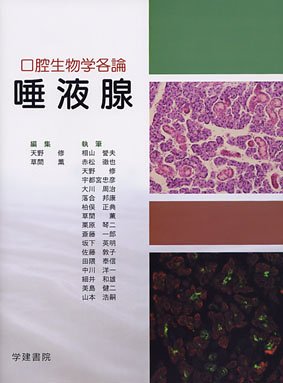4 0 0 0 OA 7歳男児に生じた猫ひっかき病の1例
- 著者
- 鈴木 円 田中 章夫 菊池 建太郎 草間 薫 鈴木 正二 坂下 英明
- 出版者
- 日本小児口腔外科学会
- 雑誌
- 小児口腔外科 (ISSN:09175261)
- 巻号頁・発行日
- vol.20, no.1, pp.54-57, 2010-06-25 (Released:2014-07-18)
- 参考文献数
- 10
Cat-scratch disease (CSD) is a zoonosis characterized by lymphadenopathy in a patient with a history of cat contact. CSD is caused by Bartonella henselae infection and is a common cause of regional lymphadenopathy. The manifestations include erythema or papules at the site of injury and regional lymphadenitis in the initial stage of infection. We report the case of a seven-year-old boy who presented with swelling of the buccal. CT showed extensive lymphadenopathy in multiple lymph nodes in the buccal and submandiblar regions. He had a history of contact with cats. Serologic examinations for IgG and IgM titers to Bartonella henselae were performed by an indirect fluorescence assay. This assay revealed positive serum antibody titers for Bartonella henselae. On the basis of these results, CSD was diagnosed, and the patient was given an antibiotic for 14 days. After that, the patient recovered, with no recurrence.
- 著者
- 水家 健太郎 佐藤 栄一 米田 哲 草間 薫 高以良 仁 冨岡 譲二
- 出版者
- 一般社団法人日本理学療法学会連合
- 雑誌
- 理学療法学 (ISSN:02893770)
- 巻号頁・発行日
- pp.11836, (Released:2020-11-19)
- 参考文献数
- 9
【目的】災害時の緊急医療支援において,リハビリテーションは重要である。しかし,それに携わる人材は少なく,特に外国での活動に関しては報告も限られる。本論文ではモザンビーク共和国での経験を実践報告として報告する。【内容】サイクロン災害の概要,派遣までの経緯,現地での経験や,そこから見えてきた課題を共有する。【症例】リハビリテーション対象患者に対して,移動手段の獲得,疾病や障害の予防,患者教育などがなされた。各症例には「持続可能性」「コミュニケーション」「適正技術」等の国際協力におけるキーポイントが含まれる。【結語】緊急医療支援におけるリハビリテーションは発展途上であり,今回の派遣でいくつかの課題を持ち帰った。今後の発展のためには多くのリハビリテーション専門職の知恵や技術が必要である。
1 0 0 0 耳鼻咽喉科用内視鏡の洗浄法別の清浄度:―ATP法による評価―
- 著者
- 山村 幸江 草間 薫 吉原 俊雄
- 出版者
- 日本耳鼻咽喉科感染症・エアロゾル学会
- 雑誌
- 日本耳鼻咽喉科感染症・エアロゾル学会会誌 (ISSN:21880077)
- 巻号頁・発行日
- vol.5, no.1, pp.29-32, 2017
<p>Background: Flexible laryngeal endoscopes are important tools in the everyday practice of Ear-Nose-Throat (ENT) departments. However, reprocessing procedures for endoscopes without suction or instrument channels (i.e., observation-only scopes) have not yet been standardized in Japan. The reprocessing process of endoscope consists of cleaning, disinfection, rinse, and storage. As for cleaning, the guideline of United Kingdom recommends the scopes to be cleaned using running water and neutral enzymatic detergents. However in Japan, recent questionnaire surveys show that the majority of ENT departments clean the scopes without detergents.</p><p>Therefore, we performed an ATP bioluminescence test for hygiene monitoring of the scopes to confirm the necessity of detergents.</p><p>Materials and methods: In two ENT clinics, 30 laryngoscopes were cleaned using each different protocols as follows.</p><p>Clinic A:</p><p>i.Wipe the insertion parts with alcohol gauze.</p><p>ii.Scrub the insertion parts with a sponge soaked with a neutral detergent for kitchen use.</p><p>iii.Scrub the insertion parts with a sponge soaked with an enzymatic detergent for endoscopes.</p><p>Clinic B:</p><p>i.Soak insertion parts in running water for a few seconds.</p><p>ii.Scrub the insertion parts with a sponge soaked with a neutral detergent for kitchen use.</p><p>iii.Scrub the insertion parts with a sponge soaked with an enzymatic detergent for endoscopes.</p><p>After soaking these scopes in the disinfectant and rinsing them with water, the ATP test was performed using a 3M™ Clean-Trace™ Luminometer. The measured ATP was expressed in relative light units (RLU). The result is defined as "pass" when the measured RLU was 20 and below, "fail" when the RLU was 21 and above. The ratio of pass/fail was compared between the different cleaning protocols.</p><p>Results: The ratio of pass/fail was as follows.</p><p>Clinic A: alcohol gauze, 14/18 (pass: 43.8%), neutral detergent for kitchen use, 24/6 (80%), enzymatic detergent for endoscopes, 29/1 (96.6%).</p><p>Clinic B: Running water, 21/9 (70%), neutral detergent for kitchen use: 25/5 (83%), enzymatic detergent for endoscopes, less soaking time 19/11 (63.3%), enough soaking time 30/0 (100%).</p><p>Conclusion: ATP hygiene monitoring shows, that for cleaning of laryngeal endoscopes, it is necessary to use enzymatic detergents with sufficient soaking time. The detergent for kitchen use is inadequate for cleaning endoscopes.</p>
- 著者
- 高山 泰男 鈴木 円 白野 隆史 山野井 弘充 堀 稔 田中 博 草間 薫 茂呂 周
- 出版者
- 日本大学歯学部
- 雑誌
- The Journal of Nihon University School of Dentistry (ISSN:00290432)
- 巻号頁・発行日
- vol.32, no.3, pp.151-158, 1990
We treated a case of adenoid cystic carcinoma that occurred in the right parotid gland of a 51-year-old woman. Although the tumor, including part of the parotid gland, was resected based on a clinical diagnosis of pleomorphic adenoma, it was later diagnosed as adenoid cystic carcinoma of mixed cribriform-solid type by histopathological examination after resection. Therefore, postoperative irradiation with a dose of 51 Gy was performed.<BR>Immunohistological examination of the resected specimen showed that the profiles of carbohydrate antigens were Lewis (a<SUP>-</SUP>, b<SUP>+</SUP>) in both the tumor and surrounding normal parotid tissue. NCC-SG-007 antigen was observed in the tumor tissue but not in the normal parotid gland, suggesting that this antigen was associated with the tumor.
1 0 0 0 口腔生物学各論唾液腺
1 0 0 0 OA Calcium Phosphate Cementの組織反応について
- 著者
- 菅原 明喜 西山 實 草間 薫 茂呂 周 西村 敏 工藤 逸郎 CHOW Laurence C. 高木 章三
- 出版者
- 一般社団法人日本歯科理工学会
- 雑誌
- Dental Materials Journal (ISSN:02874547)
- 巻号頁・発行日
- vol.11, no.1, pp.11-16, 111, 1992-06-25
- 被引用文献数
- 16 63
Calcium Phosphate Cement(CPC)は,水の介在下において常温で短時間のうちにHydroxyapatite(HAp)に転化することが知られており,臨床的な報告もいくつかなられている。今回は,根管充填用に開発された数種のCPCペーストの生体親和性についてラットを用いた組織反応試験を行い,市販根管充填材料と比較することによって検討を行った。 その結果,CPCをベースとした各種試作根管充填材料は,市販のものと比較して極めて良好な生体親和性を示し,HApそのものと比較しても組織反応における明確な違いはなかった。今回使用した市販の根管充填材料は,既に臨床で広く用いられ充分な評価を得ているものばかりなので,本材料も臨床に応用し得るものであることが示唆された。
- 著者
- 菅原 明喜 草間 薫 西村 敏 西山 實 茂呂 周 工藤 逸郎 高木 章三 CHOW Laurence C.
- 出版者
- 一般社団法人日本歯科理工学会
- 雑誌
- 歯科材料・器械 (ISSN:02865858)
- 巻号頁・発行日
- vol.12, no.6, pp.691-698, 1993-11-25
- 被引用文献数
- 7
Calcium Phosphate Cement(CPC)は, 生体内環境下で短時間のうちに硬化しHydroxyapatite(HPp)に転化することから, 極めて良好な生体親和性を示すことが知られている.このような特性から, CPCは根管充〓, 象牙質知覚過敏症, 歯の再石灰化, 齲蝕抵抗性の向上等様々な分野に応用が可能であり, 臨床にも応用されるようになってきている.本実験はCPCの骨補〓への応用の可能性について動物実験を行い, 特に組織反応と骨伝導性の観点から検討を行った.成犬の下顎骨に形成したポケットにCPCとApaceram(HPp系顆粒)を〓入した際の病理組織変化は以下に示すとおりである.術後2週間では, CPCとApaceramともに隣接組織の炎症の反応は見られなかった.また, 両者とも密な線維性結合組織でポケット上部が覆われていた.術後2ヵ月では, CPCを〓入したポケットは完全に骨膜と骨組織によって覆われており, HApとなっているCPCの〓入物自体が, 部分的に新生骨によって置き換わっている像が認められた.Apaceramのポケットは, 密な線維性結合組織で覆われているものの, 顆粒が〓入時と同じように固定しているものは見られず, 特にポケットが浅い症例では顆粒が移動してしまい結合組織のみが残存しているものも見られた.術後6ヵ月においては, CPCのポケットは骨膜と厚い皮質骨によって完全に覆われ, CPC自体がほとんど骨によって置き換えられているのが認められた.Apaceramにおいては, ポケットが骨膜と骨組織によって被覆されてはいるが, その状態は完全ではなく顆粒の移動により骨組織の見られない所もあった.2ヵ月の所見と同様に, 深いポケットにおいてもApaceramの顆粒の消失および移動が見られ, 新生した組織によってポケット内に十分に固定されているようには見えなかった.以上のことより, CPCは臨床的に種々のタイプの骨補〓に十分に応用し得るものであると判断された.

